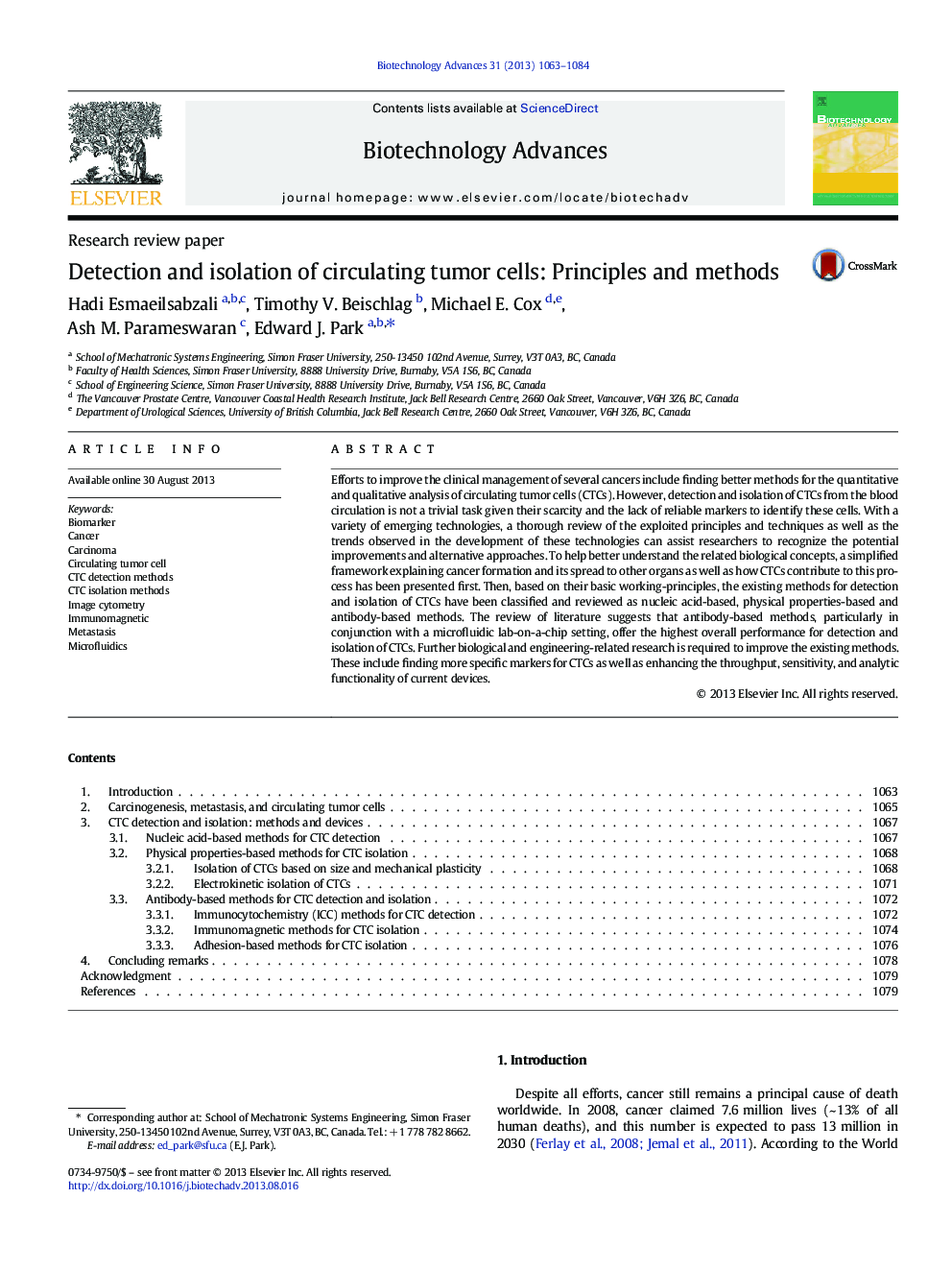| Article ID | Journal | Published Year | Pages | File Type |
|---|---|---|---|---|
| 10231420 | Biotechnology Advances | 2013 | 22 Pages |
Abstract
Efforts to improve the clinical management of several cancers include finding better methods for the quantitative and qualitative analysis of circulating tumor cells (CTCs). However, detection and isolation of CTCs from the blood circulation is not a trivial task given their scarcity and the lack of reliable markers to identify these cells. With a variety of emerging technologies, a thorough review of the exploited principles and techniques as well as the trends observed in the development of these technologies can assist researchers to recognize the potential improvements and alternative approaches. To help better understand the related biological concepts, a simplified framework explaining cancer formation and its spread to other organs as well as how CTCs contribute to this process has been presented first. Then, based on their basic working-principles, the existing methods for detection and isolation of CTCs have been classified and reviewed as nucleic acid-based, physical properties-based and antibody-based methods. The review of literature suggests that antibody-based methods, particularly in conjunction with a microfluidic lab-on-a-chip setting, offer the highest overall performance for detection and isolation of CTCs. Further biological and engineering-related research is required to improve the existing methods. These include finding more specific markers for CTCs as well as enhancing the throughput, sensitivity, and analytic functionality of current devices.
Keywords
Related Topics
Physical Sciences and Engineering
Chemical Engineering
Bioengineering
Authors
Hadi Esmaeilsabzali, Timothy V. Beischlag, Michael E. Cox, Ash M. Parameswaran, Edward J. Park,
